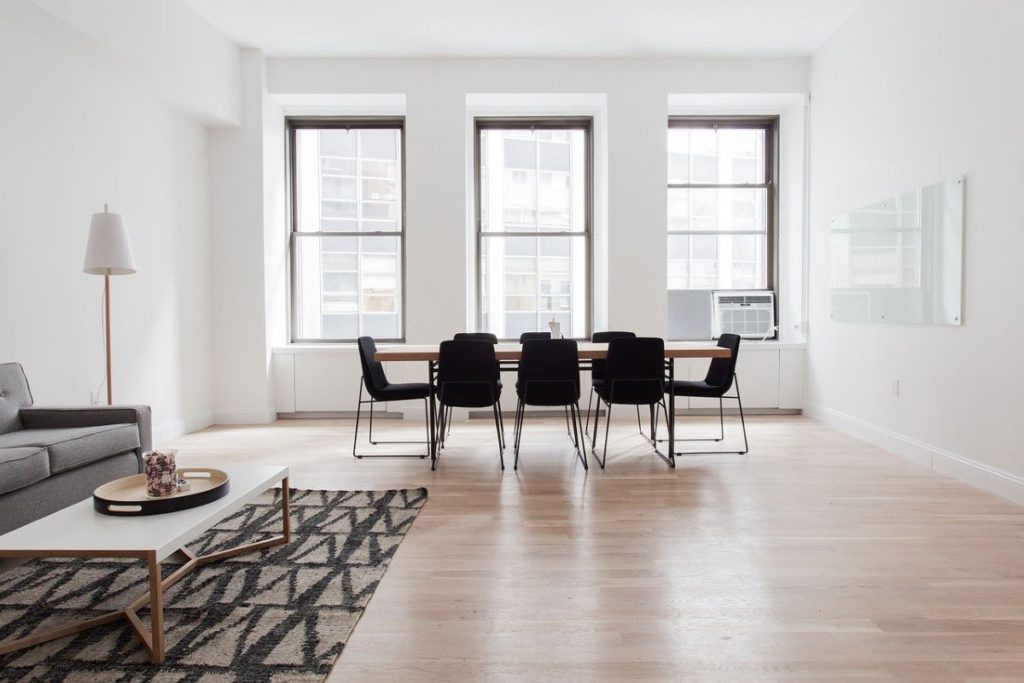It might surprise you just how much the architecture around you can actually affect your emotions and behaviours. Most of us have heard the term Fung Shui in passing at some point or another but few actually know much of the meaning or origin of the concept. Fung Shui refers to the traditional Chinese practice or belief that there are ways to optimise your wellbeing with regard to your surroundings or environment. While the term is widely used, it has always been thought to simply be a pseudo-science or superstition. Over the last few decades, there have been numerous studies that look into similar theories. Of these studies, most have found plenty of evidence to support the idea that as humans, we are infinitely affected by our surroundings (duh) and this also includes things such as architecture and design elements of homes, shops, offices etc.
We are a sensory species at our core; however, the sensitivity to outward stimulus varies from person to person. This can be seen right across the board from as little as high pitched noises being heard by some and not by others, through to tolerance for heat or cold. Many of us know at least one person who doesn’t seem to be affected by anything at all and another who has to modify so much of their lifestyle to accommodate for these sensitivities. These are examples are that of a tangible and visible nature but there are also seemingly a number of subconscious influences around us every day. Other cultures, including the Chinese Fung Shui have acknowledged these influences and documented them for much longer than we in the western world. Winston Churchill is said to have first noticed this difference when talking about the impacts that rebuilding after the world war could have on us and our emotions.
The world of sensory environments is likely to remain a hot topic for leading neuroscientists in years to come, but there are plenty of ways we can incorporate the concept into our everyday lives right now. The easiest places to start are in our homes and offices by rearranging our furniture, investing in home office chairs, or upgrading our carpets – the list of small changes we can make is endless. The number of office chairs Australia has invested in (particularly in the last 18 months) just goes to show how many of us use them for some portion of our lives. Ensuring we look after our bodies while we work will improve not only our physical health but also our emotional wellbeing. Similarly, investing in quality items such as carpets that are made from quality materials will improve your comfort physically which in turn will improve your mental health and in some cases even self-esteem.
 Whether you are building a new house or simply maintaining an existing one, being mindful of the materials and chemicals we choose and use is an easy way to make conscious decisions for our wellbeing but also the planet. The use of strong chemicals and fragrances is commonplace in many popular household cleaners and pesticides. It is easy to simply opt for the strong bleach option that markets itself as tough on stains, but taking the time to look into effective alternatives is easier than you might think. You must also be wary of purchasing material appropriate products – wooden floor cleaner may only be effective for that surface, better to get a multipurpose product if you’d rather have a one size fits all approach. Similarly, when picking the materials to use for your building plans you shouldn’t just be ensuring you’re not using the ones we know to be dangerous, like asbestos, but also be looking to ensure you are using materials that have potential to benefit. A lot can be said for grounding opportunities. Many cultures and people of spiritual beliefs value the act of grounding oneself quite literally through direct skin contact to the earth such as dirt, grass, sand. This is recognised as a way to balance your inner harmony. With this idea in mind, opting to incorporate naturally occurring materials such as external timber cladding is the perfect way to keep your home as natural as possible. Obviously there will be materials that aren’t so easy to make from naturally occurring materials whilst still providing a modern and functional home – there’s no need to forgo your insulation, Merbau stain, durable paints or timber filler.
Whether you are building a new house or simply maintaining an existing one, being mindful of the materials and chemicals we choose and use is an easy way to make conscious decisions for our wellbeing but also the planet. The use of strong chemicals and fragrances is commonplace in many popular household cleaners and pesticides. It is easy to simply opt for the strong bleach option that markets itself as tough on stains, but taking the time to look into effective alternatives is easier than you might think. You must also be wary of purchasing material appropriate products – wooden floor cleaner may only be effective for that surface, better to get a multipurpose product if you’d rather have a one size fits all approach. Similarly, when picking the materials to use for your building plans you shouldn’t just be ensuring you’re not using the ones we know to be dangerous, like asbestos, but also be looking to ensure you are using materials that have potential to benefit. A lot can be said for grounding opportunities. Many cultures and people of spiritual beliefs value the act of grounding oneself quite literally through direct skin contact to the earth such as dirt, grass, sand. This is recognised as a way to balance your inner harmony. With this idea in mind, opting to incorporate naturally occurring materials such as external timber cladding is the perfect way to keep your home as natural as possible. Obviously there will be materials that aren’t so easy to make from naturally occurring materials whilst still providing a modern and functional home – there’s no need to forgo your insulation, Merbau stain, durable paints or timber filler.
Structurally speaking, there are many ways to use your environment to better your emotional wellbeing. It is said that having high ceilings impacts the way we think and feel and encourages us to think bigger whilst also fostering abstract thought processes. Having access to pleasing and nature-filled views is also proven to be substantially beneficial for stress levels; many of us find looking out a window onto colourful gardens or green grasses soothing. Conversely, people who live in areas with less natural light and no greenery were found to report lower overall moods and to have a higher prevalence of illness including circulatory disease. Colours used within the buildings we inhabit have also been proven to greatly impact our emotional wellbeing. The most tangible example of the way colours impact our mood is MacDonald and other fast-food chain’s signs – studies have shown that the colours red and yellow (particularly in combination) stir up feelings of hunger in us. As such, when we see these colours in bright neon signs, feelings of hunger are encouraged and we are more likely to stop in to pick up a snack. This can also be seen in the colours we paint our walls. Whilst everybody will inevitably respond differently, cooler colours such as blues and whites are said to foster feelings of calm where oranges might spark feelings of enthusiasm or green can be used to alleviate feelings of stress. Worth doing a bit of investigation before settling on a new colour scheme.
For us in the western world, the consciousness of how our environments might affect our emotions is still fairly new. That being said, it is certainly worth taking the time to consider if you are currently providing yourself the best environment to thrive. Perhaps investing in some upgrades or rearranging a few rooms in your house would be an easy place to start – see if you notice a difference and then build from there.
